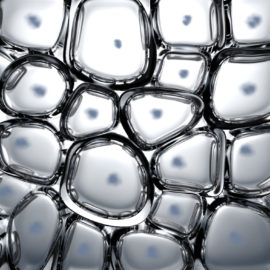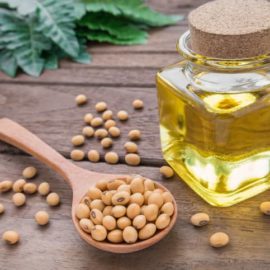A damaged skin barrier is a major common denominator for accelerated aging and unhealthy skin that causes an older-looking appearance. The human body has developed internal processes that protect and preserve skin and make sure it acts as a barrier, while preserving its hydration. However, this barrier can be harmed, which in turn causes the skin to be dry, desquamated and uncomfortable, especially in extraordinary circumstances such as the confinement we are living. As consumers grow increasingly knowledgeable about this, many of them ask “how do I know if my skin barrier is damaged” or “how do you repair a damaged skin barrier”. Long-term solutions that will heal their damaged skin barrier and provide skin barrier repair are the answer.
Furthermore, market trends show that they are looking for very specific solutions: according to a survey published by Forbes, 92% of consumers are more likely to trust a company that supports social or environmental issues, and 87% would buy a product with a social and environmental benefit. Following these sustainability trends across different markets, cosmetic brands are striving to provide consumers with effective, holistic solutions that use natural, ethical and sustainable ingredients.
Content
How do you repair a damaged skin barrier?
Maintaining healthy skin is involved with making sure it can perform its task as a barrier. This is where Hydrafence™ comes into play, as it offers protection to what is considered as the skin’s wall, significantly healing a damaged skin barrier. In order to do this, calcium-rich ingredients have become the most effective. Scientific research has led to using Lithothamnion calcareum algae as a source of calcium to use in cosmetics, food and natural medicine and it’s also the main ingredient in Hydrafence™.
Used in order to heal a damaged skin barrier, Hydrafence™ has been proven to:
- Stimulate the skin’s natural processes for a full skin barrier repair.
- Increase the cohesion of the upper layer of the epidermis.
- Restore the skin’s ability to generate its own ceramides, reinforcing the barrier function and avoiding a damaged skin barrier.
- Fight external aggressions thanks to its “triple defense” action. Hydrafence proved to help the skin heal after phenomena such as transepidermal water loss, redness caused by irritation and microcirculation take place.
- Moisturise, refresh and soothe the skin for up to 120 hours. Tests proved that Hydrafence™ increased skin smoothness by up to 26.1% in just two weeks.
This complex can be applied in facial and body care cosmetics, bath gels or specific treatments for dry, damaged or mature skin. It’s also known for its effectiveness in long-term, sustainable hair care, ensuring hair wellness by being used in shampoos or conditioners.
Natural ingredients to heal a damaged skin barrier: How to make sure they remain ethical
The benefits of pursuing a strategy of social responsibility are many. Consumer interest, the media, and the political spotlight have led companies to embrace natural ingredients and move into a more eco-friendly and ethical space, with actions such as applying “circular beauty” paradigms. According to a report published in Statista, it’s natural and sustainable brands that are the leading contributor to increased sales of skincare products.
However, as more beauty lines adopt policies towards this transformation, it’s becoming increasingly challenging to stand out as a brand and encourage purchase. What’s more important is that a new debate has started among health-focused, eco-conscious consumers, who are going ahead in demanding that these natural ingredients are ethically sourced.
The depletion of natural resources has thus entered the beauty market’s agenda, forcing companies to adopt new policies and transform processes. These range from ways of limiting packaging and product waste to using ethically sourced and sustainable ingredients.
Provital has always offered solutions that respect and take care of the environment. It’s also the case of Hydrafence™, where sustainability policies are applied. First of all, Provital is aware of the decisive ecological importance of the Lithothamniom calcareum algae. These algae, part of marine Maerl beds, hosts a large amount of flora and fauna and helps maintain the oceans’ pH levels. For this reason, Provital has pledged to obtain this ingredient through sustainable harvesting in compliance with the standards of the OSPAR Convention (Convention for the Protection of the Marine Environment of the North-East Atlantic).
Hydrafence’s effectiveness also depends on ensuring its sustained release through a hydrocolloid matrix made of rice amylopectin. In other words, a biopolymer made of rice is used in order to release the product. The use of plant-based biopolymers has been controversial in the past regarding their sustainability. In the case of rice, half of the world’s population uses it as the basic ingredient for their diet. Employing it for non-feeding purposes could potentially interfere and endanger many people around the world, as its demand grows so does its price.
At Provital, we use the waste products resulting from refining the grains of this species of rice, so as not to interfere with its dietary use and to contribute to the circular economy. This way, an up-cycling circuit is generated, in which waste is used to generate valuable products. Thus, this Provital case study proves it’s essential to act proactively to make sure ingredients and extracts are sourced with sustainability in mind, starting from a product that acts as a skin barrier repair and moving towards a more ethical, environmentally-friendly future.
No comments yet
There are no comments on this post yet.





Leave a comment